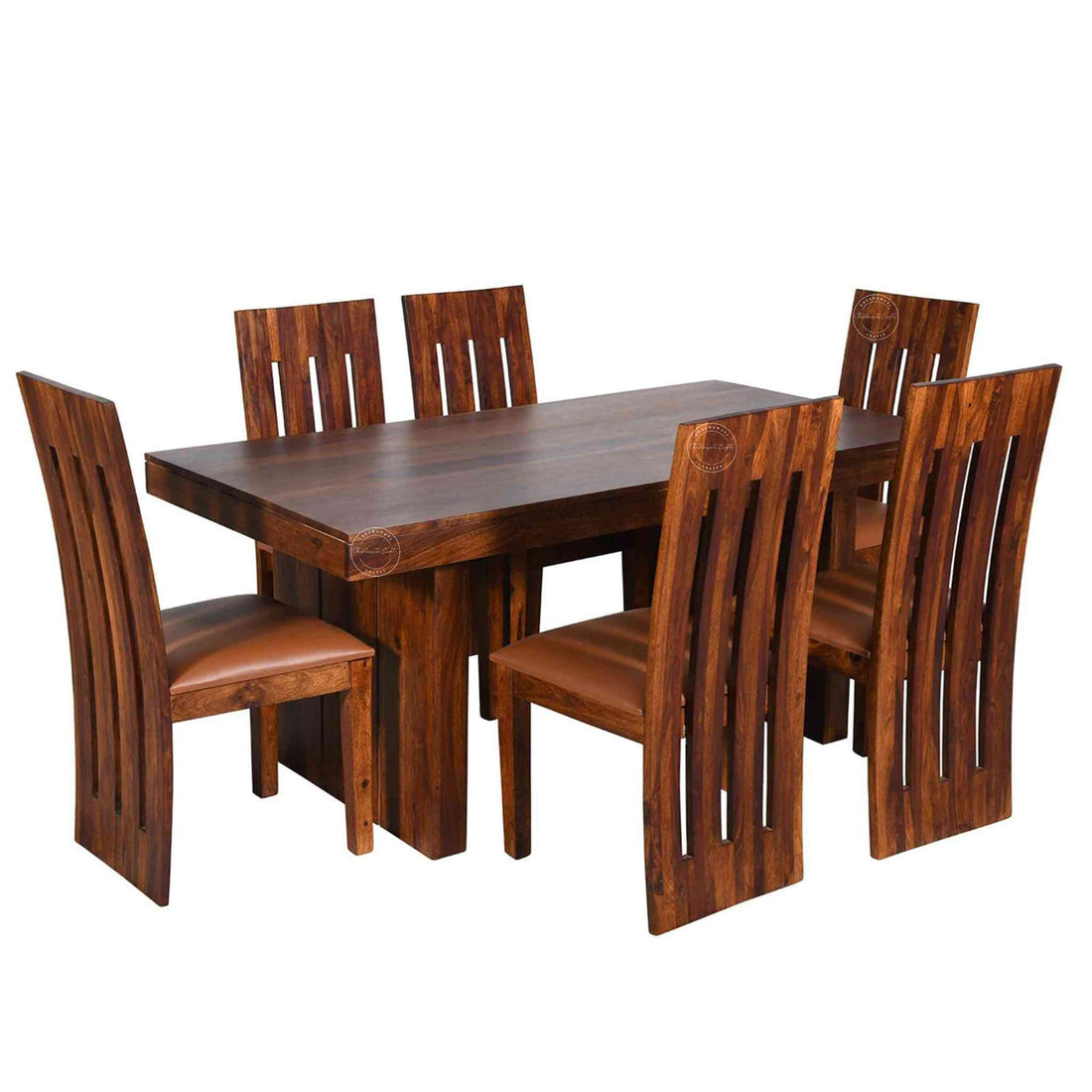
How to Choose Best Dining Table For Yourself
Share
A dining table is not just a piece of furniture; it's the heart of your dining area, where family meals, celebrations, and moments of togetherness occur. Choosing the right dining table involves balancing functionality, aesthetics, and durability to ensure it suits your needs and complements your home decor. Additionally, selecting the right material is critical for its longevity and maintenance. This article provides a comprehensive guide to help you make the perfect choice.
Factors to Consider When Choosing the Right Dining Table for Home or Office
- Size and Space: Before purchasing a dining table, measure the available space in your dining area:
Room Dimensions: Ensure there's enough space for chairs to be pulled out comfortably and for people to walk around the table.
Table Shape:
- Rectangular Dining Tables: Ideal for longer rooms and can accommodate more people.
- Round or Oval Shape dining Tables: Ideal for smaller spaces as it encourages people to talk better.
- Square Shape Dining Tables: Suitable for square-shaped rooms and more close-knit gatherings.
- Seating Capacity: Determine the number of persons you intend to host in the dining table regularly. A thumb rule is 24 inches per person, which ensures a comfortable seating area. In case you tend to entertain guests often, then consider an extendable dining table to make it easily flexible.
- Style and Aesthetics: Choose a dining table style that fits your house decor
- Traditional Styles: Usually made of wood with intricate hand-carved detailing, good for classic interiors.
-
Modern Designs: Characterized by sleek lines and minimal finishes.
Rustic or Industrial: Combine natural wood or metal for a raw, textured look.
-
Functionality: Consider how you use your dining table. If you are a family with young children, you will want something that is durable and easy to clean. If the table will be used as a work or craft area, then it should be scratch-resistant and stain-resistant.
-
Material Selection for Your Dining Table: The material of your dining table will determine its durability, maintenance, and overall appearance. Here are some popular options:
- Wood: Wood is a classic and versatile material when it comes to dining table construction.
- Advantages: Hardened, easy to restore and can be used in multiple varieties.
- Disadvantages: Scratches or warps if not managed properly. Also vulnerable to water damage.
- Types :
- Solid Wood: Strong and long-lasting, but costly. Examples include Sheesham wood, Teak wood, Mango wood, and Acacia wood.
- Veneer Wood: Cheaper, much lighter, but fragile too.
-
Glass: Glass-topped tables allow for an airy feeling along with sophistication in the ambiance.
-
Advantages: Easy to clean, makes small spaces appear larger, and works well with modern interiors.
Disadvantages: Prone to scratches, fingerprints, and can be fragile
-
Advantages: Easy to clean, makes small spaces appear larger, and works well with modern interiors.
-
Metal: Metal tables, or those with metal bases, are durable and stylish.
- Advantages: Resistant to wear and tear, suits industrial or contemporary decor.
- Disadvantages: Can feel cold and less inviting for traditional spaces.
-
Stone: Stone surfaces, like marble or granite, are luxurious and unique.
-
Advantages: Extremely durable and heat-resistant.
Disadvantages: Heavy, expensive, and requires regular maintenance to prevent staining.
-
Advantages: Extremely durable and heat-resistant.
-
Laminate: Laminate tables are budget-friendly and available in various styles.
- Advantages: Affordable, lightweight, and easy to clean.
- Disadvantages: Less durable and can chip over time.
Final Tips for Choosing the Perfect Dining Table
Set a Budget: Determine how much you’re willing to invest. Remember, a good dining table is a long-term purchase.
Think About Maintenance: Consider how much work you're willing to do in cleaning and maintenance on the table.
Test Before You Buy: If possible, go to a showroom for it to ensure that it really feels sturdy and does the trick for your comfort.
Prioritize Quality Over Trends: Choose a table which meets your long-term preference of style rather than your passing desire for design trends.